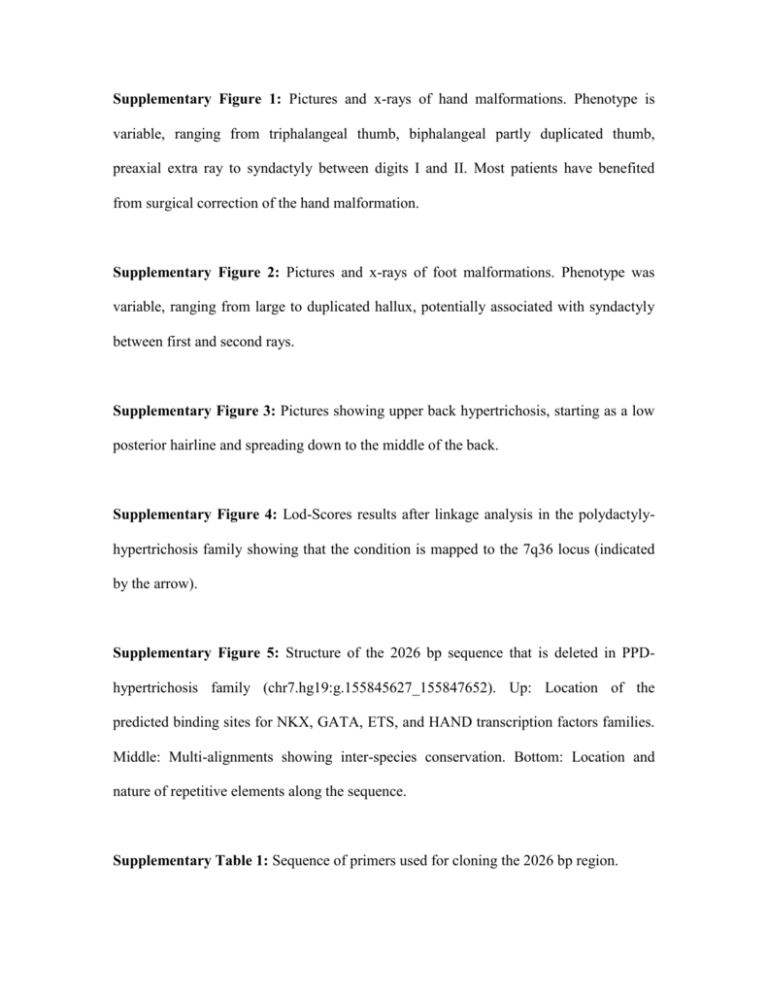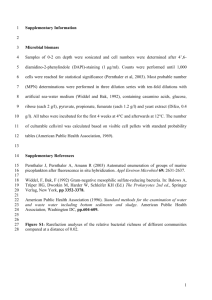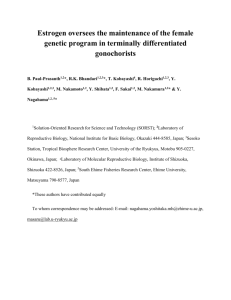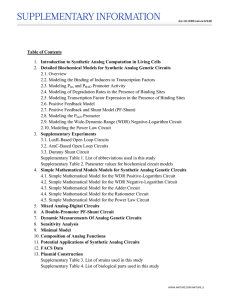Supplementary Legends (doc 25K)
advertisement

Supplementary Figure 1: Pictures and x-rays of hand malformations. Phenotype is variable, ranging from triphalangeal thumb, biphalangeal partly duplicated thumb, preaxial extra ray to syndactyly between digits I and II. Most patients have benefited from surgical correction of the hand malformation. Supplementary Figure 2: Pictures and x-rays of foot malformations. Phenotype was variable, ranging from large to duplicated hallux, potentially associated with syndactyly between first and second rays. Supplementary Figure 3: Pictures showing upper back hypertrichosis, starting as a low posterior hairline and spreading down to the middle of the back. Supplementary Figure 4: Lod-Scores results after linkage analysis in the polydactylyhypertrichosis family showing that the condition is mapped to the 7q36 locus (indicated by the arrow). Supplementary Figure 5: Structure of the 2026 bp sequence that is deleted in PPDhypertrichosis family (chr7.hg19:g.155845627_155847652). Up: Location of the predicted binding sites for NKX, GATA, ETS, and HAND transcription factors families. Middle: Multi-alignments showing inter-species conservation. Bottom: Location and nature of repetitive elements along the sequence. Supplementary Table 1: Sequence of primers used for cloning the 2026 bp region. Supplementary Table 2: Evolutionary conserved regions among the candidate locus for polydactyly-hypertrichosis family (chr7.hg19:g.155809123_157947033). ECR: evolutionary conserved region; mm10: mouse; galGal3: chicken. Supplementary Table 3: Occurrence of transcription factors binding sites in the 2026 bp sequence, predicted in silico by the MatInspector® software (Genomatix). Only transcription factors with more than two binding sites on the sequence and a matrix similarity over 95% are cited. Supplementary Table 4: Differential diagnoses for the PPD-hypertrichosis syndrome. AD: Autosomal Dominant.







